Before You Visit
Q. Can I climb the lighthouse?
A. Yes, weather permitting, you can walk out on the observation deck and look into the lens room. For their safety, children must be at least 44 inches tall to climb.
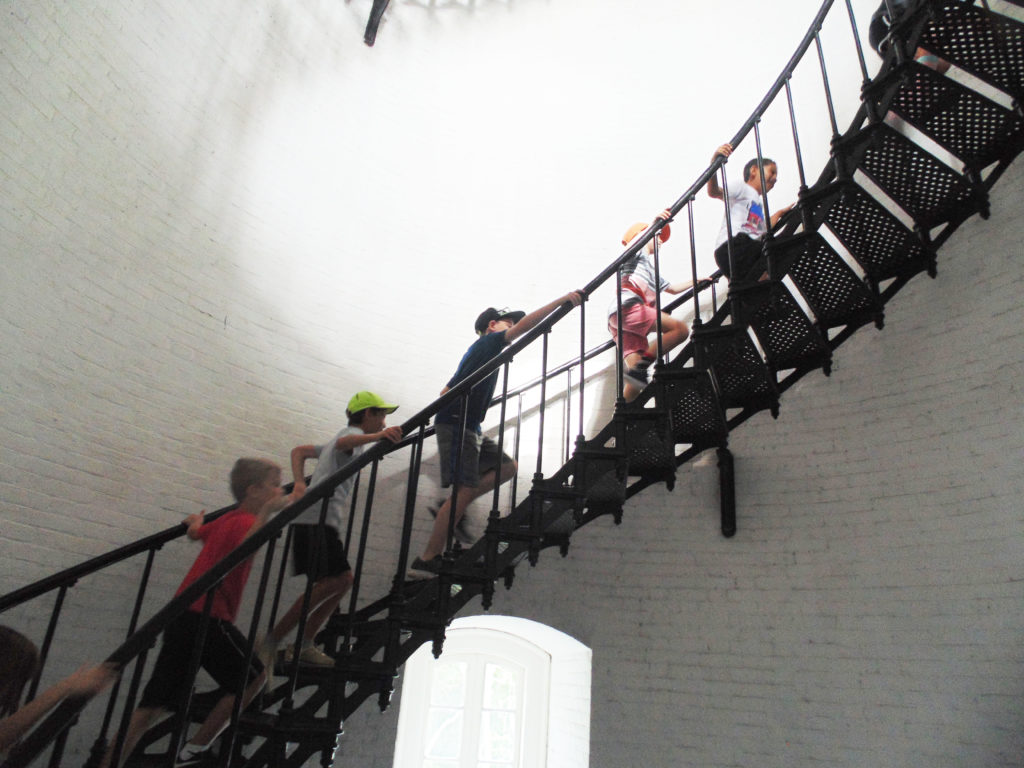
Q. Are there any restrictions to climbing?
A. You must be at least 44 inches tall to go up to the top of the lighthouse. Children who are not tall enough to climb get in free, and one adult with them gets in half off. Carrying children in the tower is prohibited, and all climbers must do so under their own power. View the Museum’s accessibility policies here.
Q. Can my pet climb the tower?
A. Animals are welcome on the historic grounds. Only service animals are allowed in historic buildings. No animal is permitted to climb the tower. Refer to the accessibility policy above for more information.
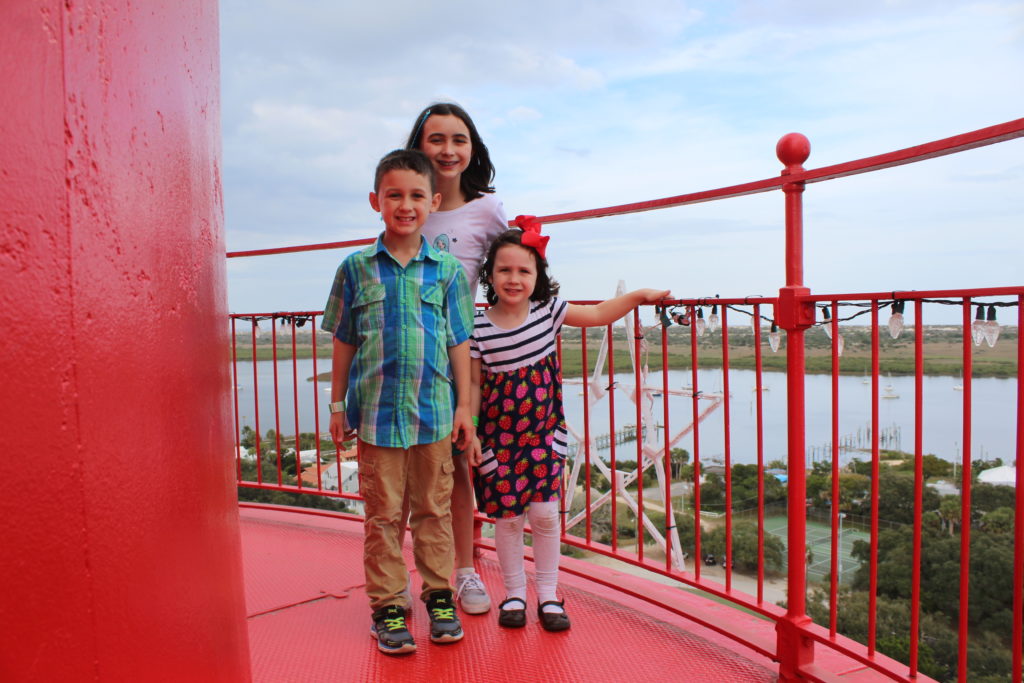
Q. How tall is the lighthouse?
A. The St. Augustine Lighthouse is 165 feet tall.
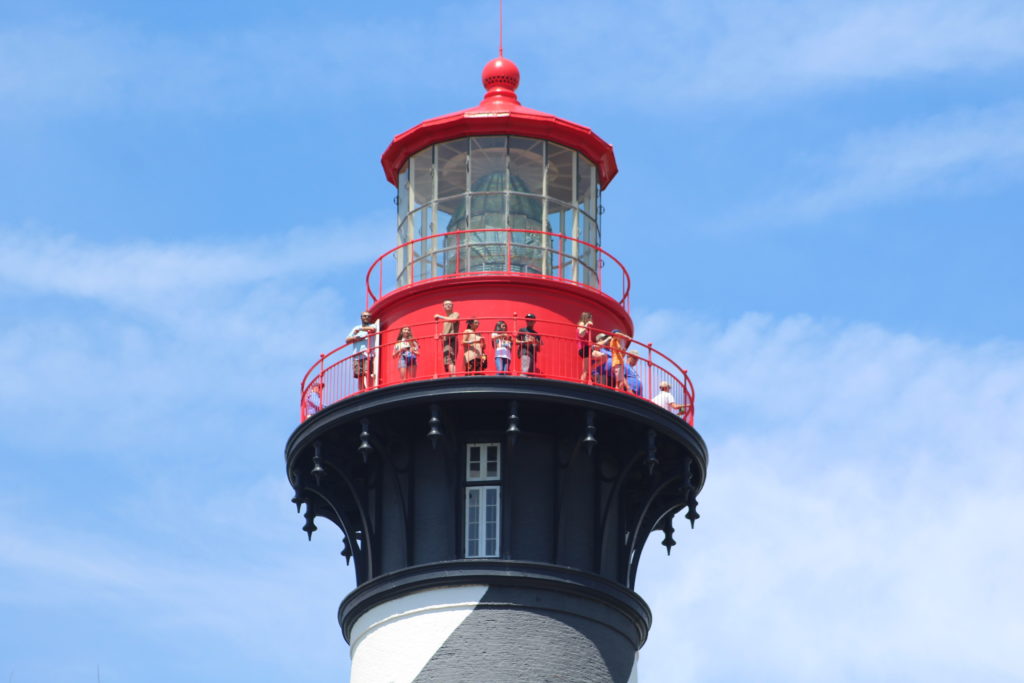
Q. How many steps are there?
A. There are 219 steps to reach the observation deck. There are also eight landings, one with a bench, where visitors can rest and let other people pass.
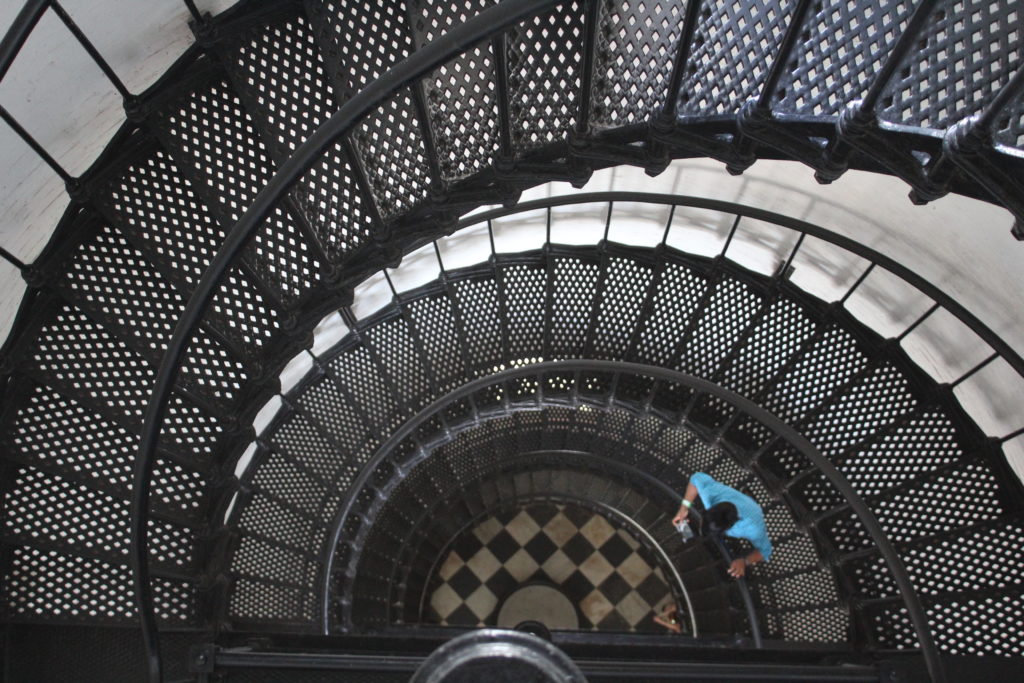
Q. What is there to do besides climb the lighthouse?
A. We have a children’s play area and puppet theater for those too short to climb, and there are exhibits in four historic structures and the new Maritime Center, many of which are hands on and interactive. We also have a boatbuilding program and schedule of Daily Demos that cover boatbuilding, historic sailing and navigation, underwater archaeology and lighthouse history.
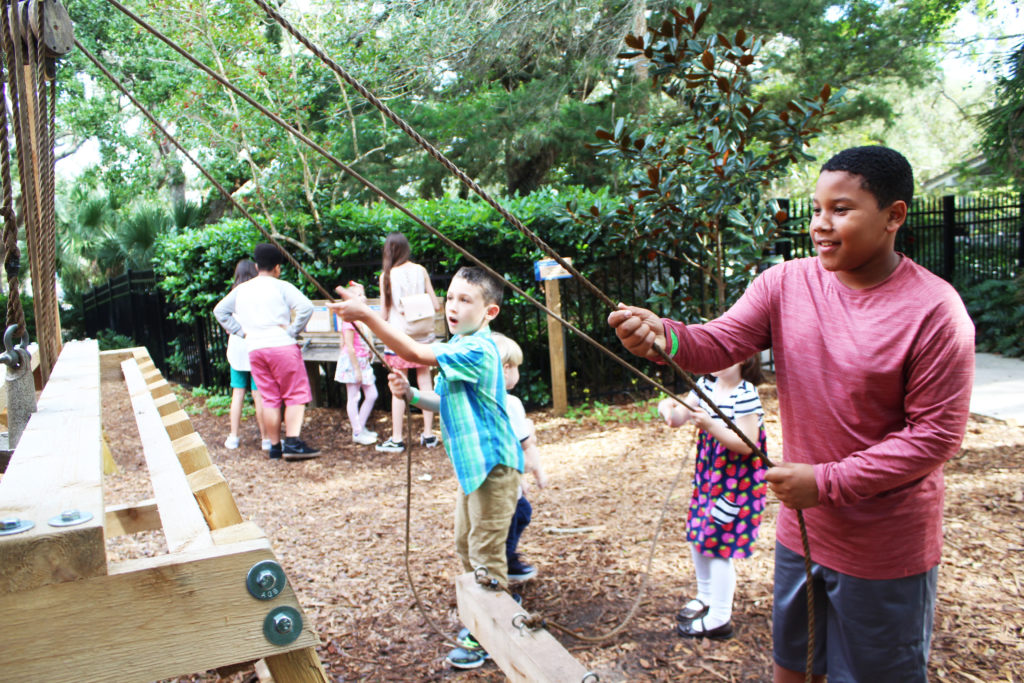
Q. Can you see through the stairs?
A. Yes. However, there are railings conveniently located on both sides.
Q. Does the lighthouse have an elevator?
A. No, the lighthouse is an historic structure, completed in 1874.
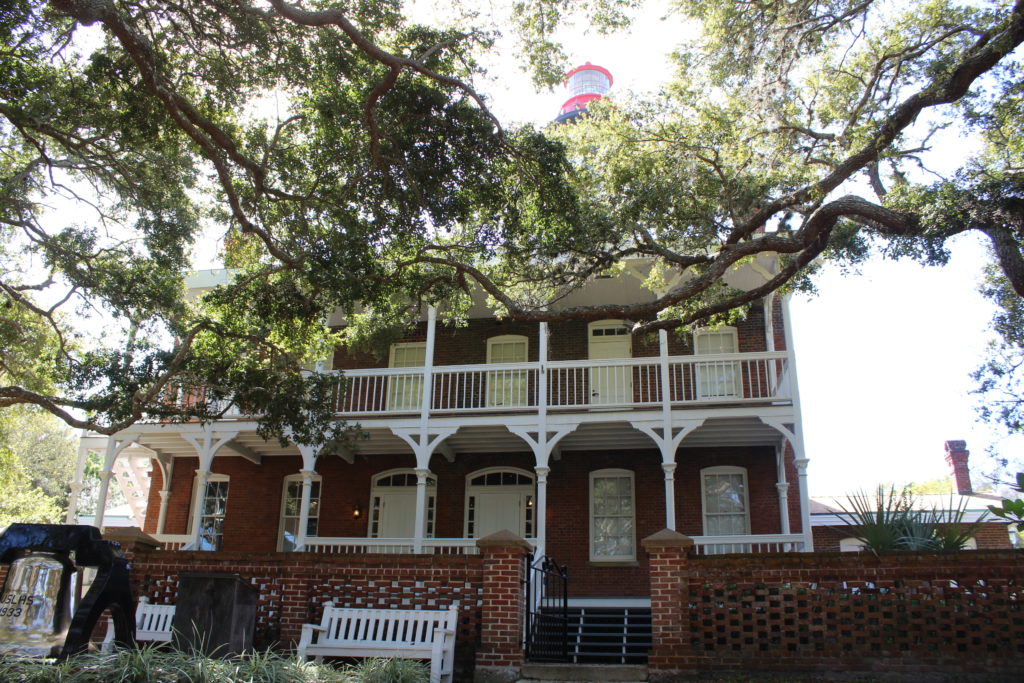
Q. Is the site handicap accessible?
A. Yes. An alternative short entrance path is available from the handicapped parking to the grounds. Staff will open the gate upon request. A ramp provides access to the ground floor of the Keepers’ House, containing exhibits. Other exhibits, including the PGA Artifact Conservation Lab Viewing Hallway, in the Maritime Education Center (MAEC), are also wheelchair accessible. On the other side of the MAEC, in the Lastinger Gallery, there is a video, “A View from the Top” so those unable to climb can see the view. However, the light station is a historic site and certain areas are accessible only by stairs. Upon request staff will open the emergency exit door to access the basement, a six-step stairway alternative to the spiral staircase inside the dwelling. Stairs lead up to the second floor of the keepers’ house. The office and storage room at the base of the tower is accessed by five steps equipped with handrails. The base of the lighthouse is reached by an additional twelve granite steps with handrails. A large-print, self-guided walking tour is available in the Visitor’s Center.
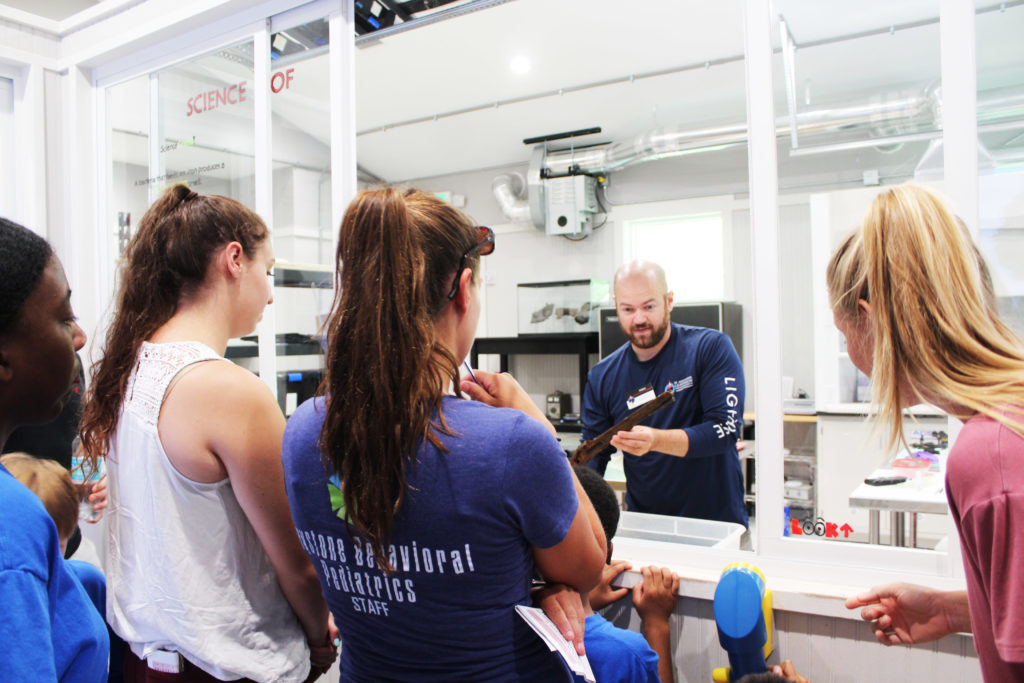
Q. Can I climb in the rain?
A. Yes, unless there is thunder or lightning, you are able to climb the tower in the rain. The observation deck will be closed if it gets too wet or if rain is coming in the access door. There is no climbing when thunder and lightning are observed in the area.
Q. Does it ever get too windy to go to the top?
A. When wind speeds at the top of the tower exceed 30 mph, children are restricted from going out on the observation deck. When wind speeds reach 40 mph or greater, access to the observation deck is off-limits to all climbers.
Fun Facts and Information
Q. When was the lighthouse built?
A. The St. Augustine Lighthouse was built between 1871 and 1874. It took three years to build due to a lack of manpower and funds. It was first lit on October 15, 1874.
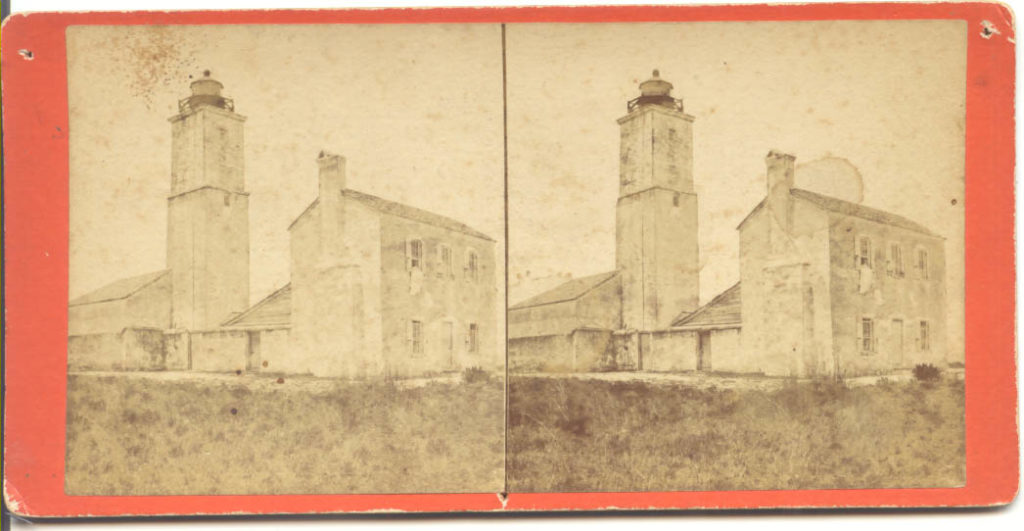
Q. Why is the lighthouse so far from the coast?
A. The first St. Augustine Lighthouse was approximately 300 yards northeast of the current Lighthouse and fell into the ocean in 1880. The current location was selected due to its relatively high elevation atop an old beach dune.
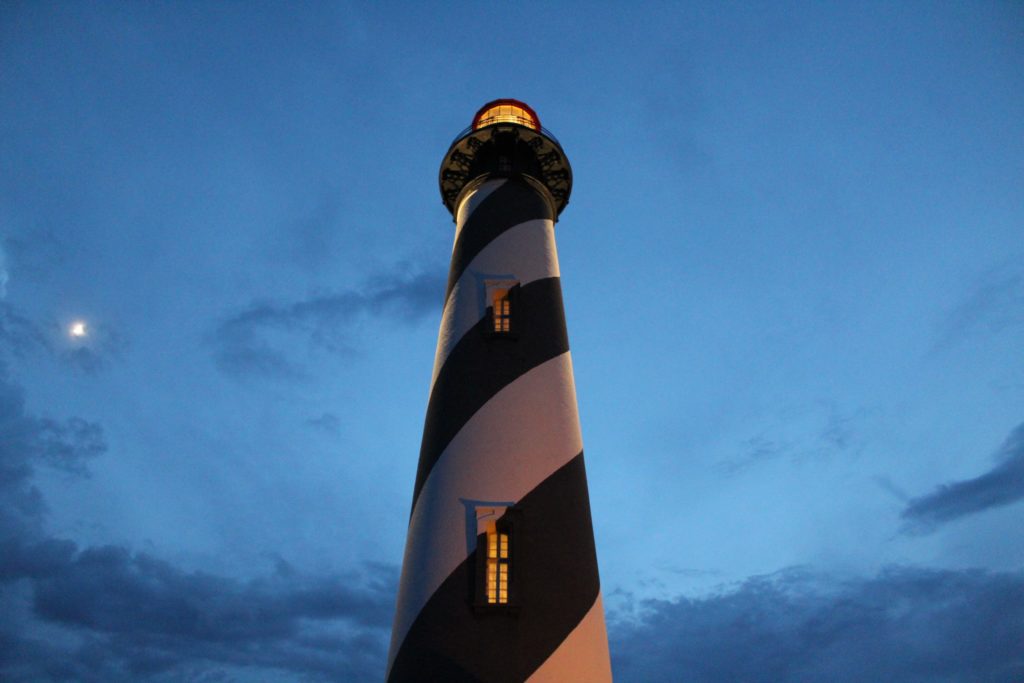
Q. Does the St. Augustine Lighthouse still come on at night?
A. Yes, it is a privately-owned active aid to navigation. The nonprofit St. Augustine Lighthouse & Maritime Museum owns and maintains the lighthouse and other historic structures on the grounds.
Q. What were the rooms at the base of the tower used for?
A. The north room, on the right when you are looking at the tower, was used to store the lard oil that fueled the light in the late 19th century. To the left, or south of, the entrance was the lighthouse keepers’ office, where they maintained detailed records of equipment, repairs, maintenance and watch logs.
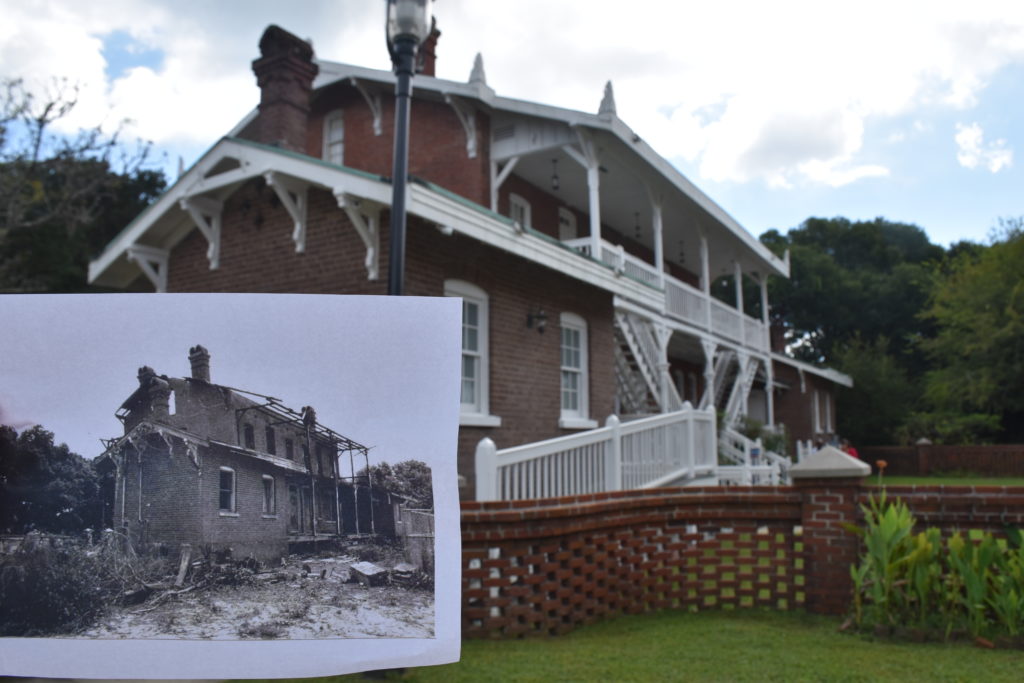
Q. Is that the original Keepers’ House?
A. Yes, it is the original Keepers’ House. After being gutted by fire in the 1970s, the Junior Service League of St. Augustine restore the structure and opened a museum. The house and lighthouse tower are on the National Register of Historic Places.
Q. Why is the Keepers’ House so big?
A. St. Augustine had up to three lighthouse keepers and their families that lived in the home. It was arranged as a duplex, with the Head Keepers’ family on the north side, the 1st Assistant Keeper on the south side, and a single room for the 2nd Assistant Keeper, who was usually unmarried. So while it is a big home, it housed up to 15 people at any given time!
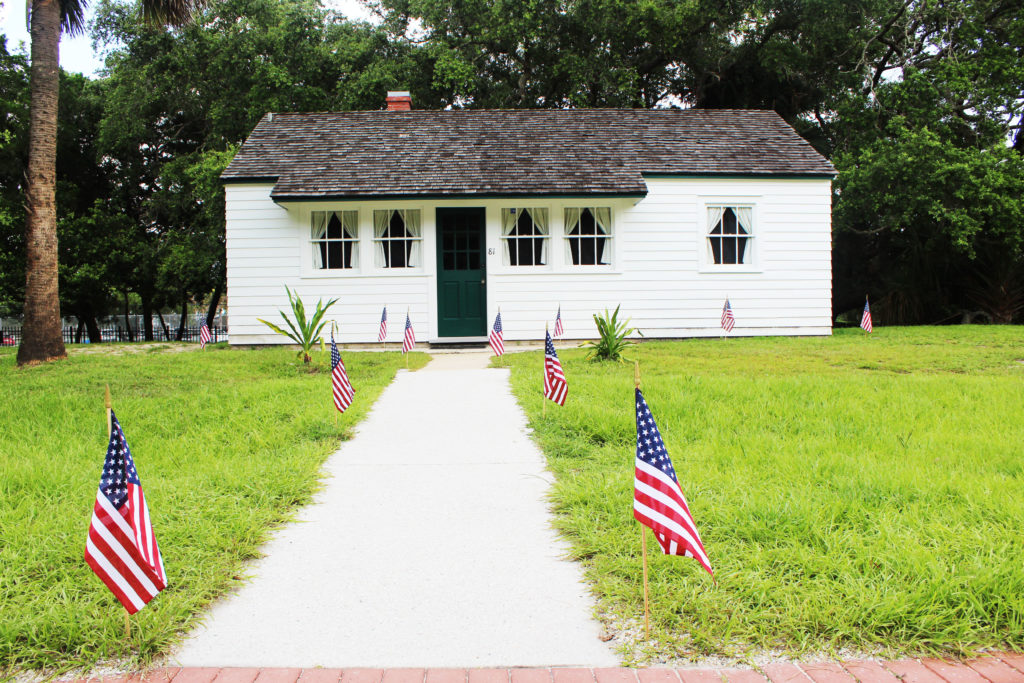
Q. What are the other historic buildings?
A. The Tin Pickle, Local Gedunk WWII-themed eatery, is located in a building first constructed as a garage for the keepers in 1936. As part of the coastal response to WWII, it was converted into a garage to maintain jeeps that worked on the U.S. Navy Beach Patrol that looked for German U-boats and other threatening activity off the coast. The other small white building directly north of the keepers’ house was built in 1941-42 to house additional U.S. Coast Guardsmen that ensured a 24-hour lookout from the top of the lighthouse.
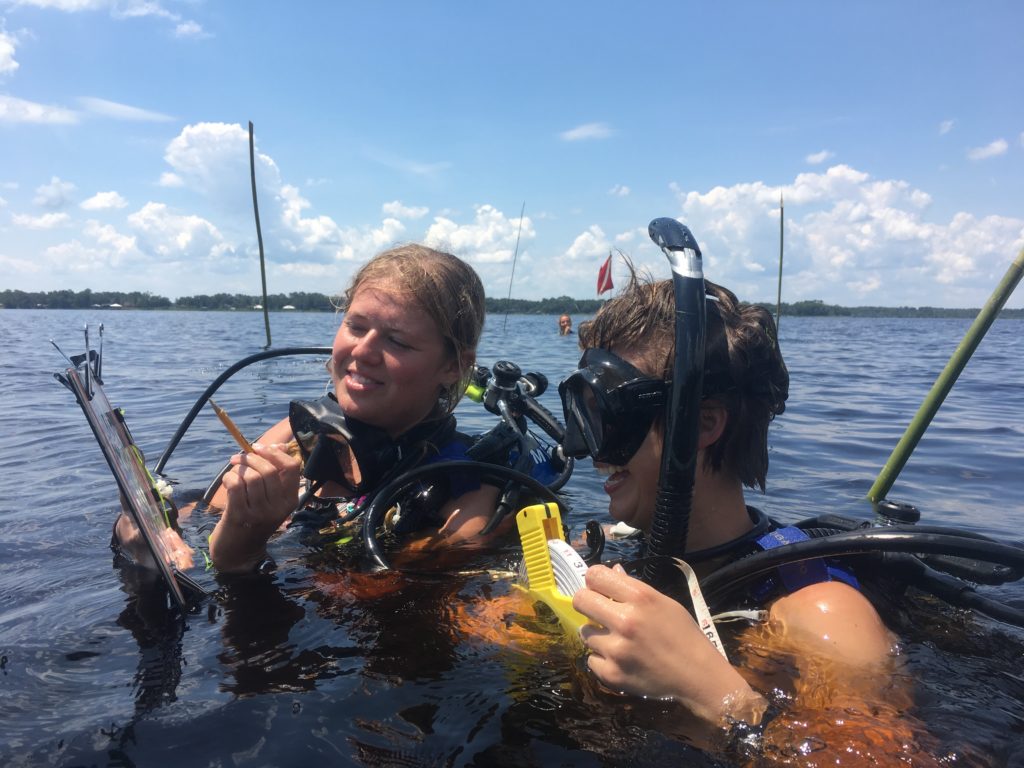
Q. What is Maritime Archaeology?
A. Click here to learn more about our Lighthouse Maritime Archaeology Program.

